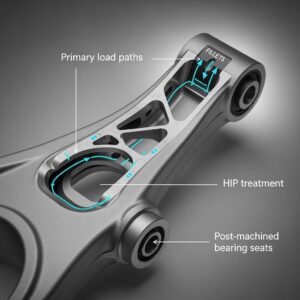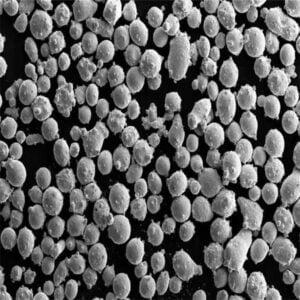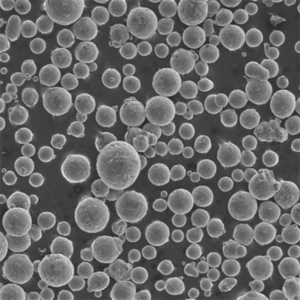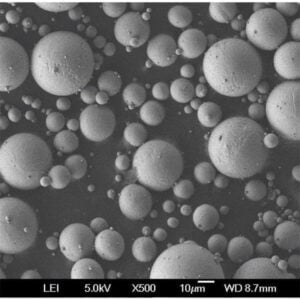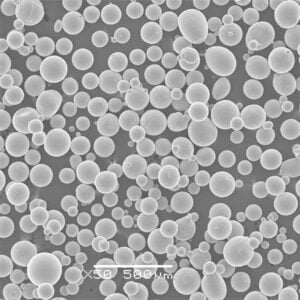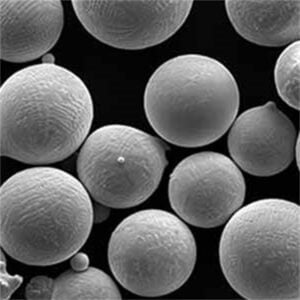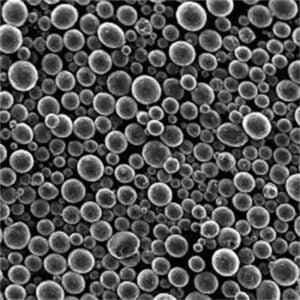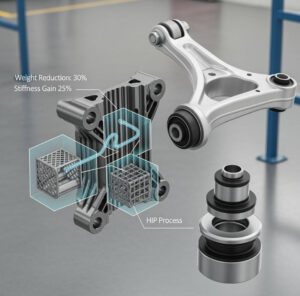열분사 종합 가이드
목차
열 스프레이 는 수많은 산업 분야에 필수적인 매혹적이고 복잡한 공정입니다. 이 글에서는 열 스프레이의 복잡성에 대해 자세히 살펴보고 자세한 개요, 특정 금속 분말 모델에 대한 논의, 다양한 응용 분야, 장점 및 한계에 대한 분석을 제공합니다. 또한 관련된 사양, 등급 및 표준을 살펴보고, 공급업체와 가격에 대한 인사이트를 제공하며, 유용한 FAQ 섹션으로 마무리합니다.
열 분무 개요
열 스프레이는 녹거나 가열된 재료를 표면에 분사하여 보호 또는 장식용 층을 형성하는 코팅 공정입니다. 이 기술은 표면 특성을 개선하는 데 다양하고 효과적이기 때문에 제조, 자동차, 항공우주 및 기타 여러 산업에서 널리 사용됩니다.
열분사란 무엇인가요?
열 스프레이는 분말이나 와이어를 화염 또는 플라즈마 제트에 공급하여 용융 입자 흐름을 생성하는 방식입니다. 그런 다음 이 입자를 코팅할 표면에 분사하여 빠르게 응고시켜 내구성 있는 층을 형성합니다. 이 공정은 금속, 세라믹, 플라스틱, 복합재 등 다양한 소재에 적용할 수 있습니다.
왜 열분사를 사용하나요?
열 분무는 여러 가지 이점을 제공합니다:
- 향상된 내마모성: 표면의 내마모성을 크게 향상시킵니다.
- 부식 방지: 부식에 대한 탁월한 보호 기능을 제공합니다.
- 단열: 단열 용도에 효과적입니다.
- 전기 전도도: 전도성 코팅을 만드는 데 사용할 수 있습니다.
열 분무의 주요 공정
주요 열분사 공정은 다음과 같습니다:
- 화염 분사
- 플라즈마 스프레이
- 고속 산소 연료(HVOF) 스프레이
- 콜드 스프레이
- 전기 아크 스프레이
이러한 각 프로세스에는 고유한 장점이 있으며 특정 애플리케이션에 적합합니다.
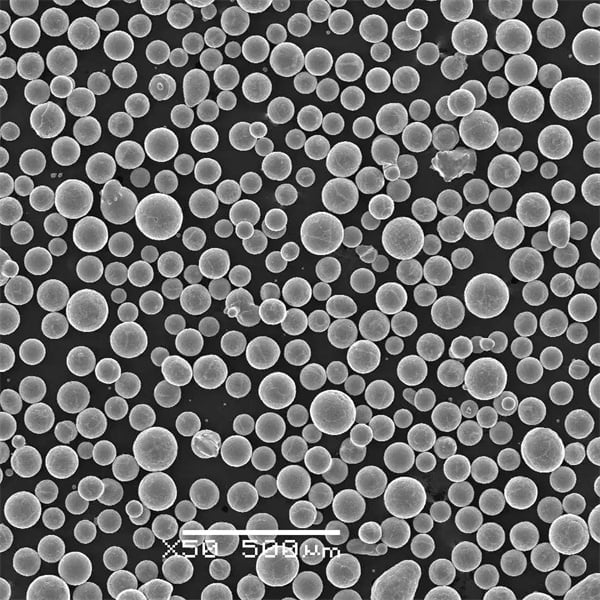
종류 열 분무 금속 분말
열 스프레이에 사용되는 금속 분말은 코팅 공정의 성공에 매우 중요합니다. 다음은 널리 사용되는 10가지 특정 금속 분말 모델입니다:
1. 알루미나-티타니아(Al2O3-TiO2) 분말
알루미나와 티타니아의 혼합물인 이 분말은 내마모성과 전기 절연성이 뛰어난 것으로 알려져 있습니다. 전자 산업에서 자주 사용됩니다.
2. 크롬 카바이드(Cr3C2) 분말
크롬 카바이드 분말은 경도가 뛰어나고 마모와 부식에 강해 고온 응용 분야에 이상적입니다.
3. 코발트-크롬(CoCr) 분말
코발트-크롬 합금은 높은 내마모성과 인성 때문에 선호됩니다. 일반적으로 의료용 임플란트 및 항공우주 부품에 사용됩니다.
4. 니켈-알루미늄(NiAl) 분말
니켈-알루미늄 분말은 우수한 접착 특성으로 잘 알려져 있으며, 열분사 응용 분야에서 본드 코팅으로 자주 사용됩니다.
5. 텅스텐 카바이드-코발트(WC-Co) 분말
이 파우더는 경도와 내마모성이 뛰어나 극한의 마모 조건에 적합합니다.
6. 스테인리스 스틸(316L) 분말
316L 스테인리스 스틸 파우더는 부식에 강하며 해양 및 의료 기기를 비롯한 다양한 분야에 사용됩니다.
7. 지르코니아(ZrO2) 분말
지르코니아 분말은 단열 특성 때문에 사용되며 일반적으로 단열 코팅에 적용됩니다.
8. 몰리브덴(Mo) 분말
몰리브덴 분말은 녹는점이 높고 열 및 전기 전도성이 뛰어나 다양한 산업 분야에서 유용하게 사용되는 것으로 알려져 있습니다.
9. 구리(Cu) 분말
구리 분말은 전기 및 열 전도성 특성으로 인해 전자 산업에서 주로 사용됩니다.
10. 철(Fe) 분말
철분은 우수한 내마모성과 자기 특성이 필요한 응용 분야에 사용됩니다.
응용 열 분무
열 스프레이는 다양한 산업 분야에서 사용됩니다. 몇 가지 주요 응용 분야를 자세히 살펴보세요:
| 산업 | 애플리케이션 | 설명 |
|---|---|---|
| 항공우주 | 터빈 블레이드 | 열 스프레이는 터빈 블레이드에 열 장벽과 내마모성을 제공합니다. |
| 자동차 | 엔진 구성 요소 | 엔진 부품의 내마모성과 수명을 향상시킵니다. |
| 석유 및 가스 | 파이프라인 | 열악한 환경에서 부식과 마모로부터 보호합니다. |
| 의료 | 임플란트 | 임플란트의 생체 적합성 및 내마모성을 위한 코팅에 사용됩니다. |
| 전자 제품 | 회로 기판 | 전도성 코팅 및 열 관리 솔루션을 제공합니다. |
| 전력 생성 | 보일러 튜브 | 고온 부식 및 침식으로부터 보호합니다. |
| 제조 | 금형 및 다이 | 표면 경도를 개선하고 공구 수명을 연장합니다. |
열 분무의 장점
열 스프레이는 다른 코팅 방식에 비해 많은 이점을 제공합니다. 자세한 비교는 다음과 같습니다:
| 이점 | 설명 |
|---|---|
| 다용도성 | 다양한 소재와 함께 사용할 수 있습니다. |
| 비용 효율적 | 구성 요소의 수명 연장을 위한 비용 효율적인 솔루션을 제공합니다. |
| 성능 | 마모, 부식 및 내열성을 개선하여 성능을 향상시킵니다. |
| 유연성 | 다양한 모양과 크기의 구성 요소에 적합합니다. |
| 효율성 | 다운타임을 최소화하는 신속한 신청 프로세스. |
단점 열 분무
열 스프레이의 장점에도 불구하고 몇 가지 한계가 있습니다:
| 단점 | 설명 |
|---|---|
| 표면 준비 | 효과적인 접착을 위해 철저한 표면 준비가 필요합니다. |
| 장비 비용 | 열분사 장비에 대한 초기 투자 비용이 높습니다. |
| 복잡성 | 이 프로세스는 복잡할 수 있으며 숙련된 운영자가 필요합니다. |
| 두께 제한 | 품질 저하 없이 특정 코팅 두께로 제한됩니다. |
사양, 크기, 등급 및 표준
열분사 재료와 공정은 품질과 성능을 보장하기 위해 특정 표준과 사양을 충족해야 합니다. 자세한 내용은 다음과 같습니다:
| 재질 | 표준 | 등급 | 크기 |
|---|---|---|---|
| 알루미나-티타니아 | ISO 14919 | 99% 순도 | 15-45 µm |
| 크롬 카바이드 | ASTM B833 | 75-80% Cr3C2 | 10-45 µm |
| 코발트-크롬 | AMS 5889 | CoCrW | 15-53 µm |
| 니켈-알루미늄 | ISO 14920 | Ni5Al | 10-45 µm |
| 텅스텐 카바이드-코발트 | ASTM B794 | WC-12Co | 15-45 µm |
| 스테인리스 스틸 | ISO 5832-1 | 316L | 15-53 µm |
| 지르코니아 | ASTM F1598 | 8Y-ZrO2 | 15-53 µm |
| 몰리브덴 | ASTM B387 | 99% 순도 | 15-53 µm |
| 구리 | ASTM B216 | 99% 순도 | 10-45 µm |
| 철 | ASTM B749 | Fe | 10-45 µm |
공급업체 및 가격 세부 정보
고품질의 열 스프레이 재료를 얻으려면 적합한 공급업체를 찾는 것이 중요합니다. 다음은 주요 공급업체와 가격이 표시된 표입니다:
| 공급업체 | 재질 | 가격(kg당) | 위치 |
|---|---|---|---|
| 프렉스에어 | 텅스텐 카바이드-코발트 | $100 | 미국 |
| 회가나스 | 니켈-알루미늄 | $60 | 스웨덴 |
| Metco | 크롬 카바이드 | $80 | 스위스 |
| 목수 | 코발트-크롬 | $120 | 미국 |
| 올리콘 | 알루미나-티타니아 | $70 | 스위스 |
| 케나메탈 | 스테인리스 스틸 | $50 | 미국 |
| HC 스탁 | 지르코니아 | $90 | 독일 |
| 샌드빅 | 몰리브덴 | $85 | 스웨덴 |
| Tekna | 구리 | $40 | 캐나다 |
| H.C. 스탁 | 철 | $30 | 독일 |
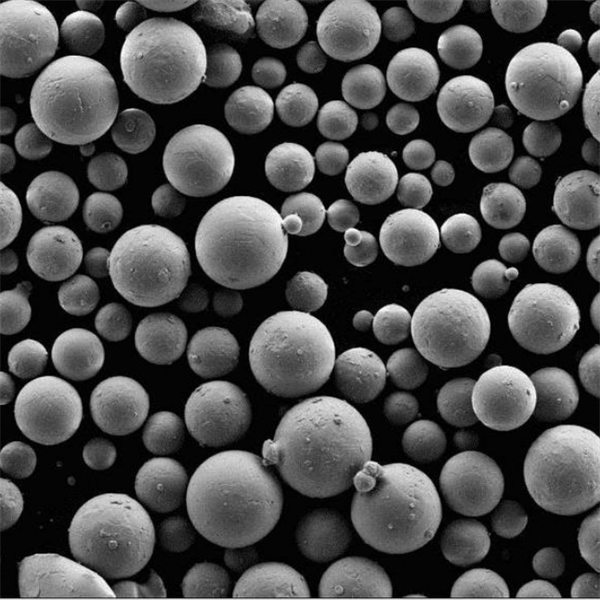
의 장단점 비교 열 분무
코팅 공정을 선택할 때는 장단점을 잘 따져봐야 합니다. 다음은 비교표입니다:
| 측면 | 장점 | 단점 |
|---|---|---|
| 비용 | 대형 구성 요소에 비용 효율적 | 높은 초기 장비 비용 |
| 내구성 | 뛰어난 내마모성 및 내식성 | 표면 준비 필요 |
| 다용도성 | 다양한 소재 및 애플리케이션에 적합 | 운영의 복잡성 |
| 효율성 | 신속한 코팅 프로세스 | 두께 제한 |
자주 묻는 질문
Q1: 열분사에는 어떤 재료를 사용할 수 있나요?
A1: 금속, 세라믹, 플라스틱, 복합재 등 다양한 소재를 사용할 수 있습니다.
Q2: 열분사를 통해 가장 큰 이점을 얻을 수 있는 산업은 무엇인가요?
A2: 항공우주, 자동차, 석유 및 가스, 의료, 전자, 발전 및 제조.
Q3: 열 스프레이의 주요 장점은 무엇인가요?
A3: 내마모성, 부식 방지, 단열성, 전기 전도성이 향상되었습니다.
Q4: 열 스프레이의 일반적인 한계는 무엇인가요?
A4: 표면 처리, 높은 장비 비용, 복잡성 및 두께 제한이 필요합니다.
Additional FAQs on Thermal Spraying
- Q: How do I choose between HVOF, plasma spraying, and cold spray for my application?
A: Match process to property needs: HVOF yields dense, low-oxide cermet coatings with high bond strength (wear/corrosion). Plasma spraying handles high-melting ceramics (thermal barriers, electrical insulation). Cold spray preserves feedstock properties with minimal oxidation, ideal for corrosion repair and electrically conductive, ductile metals. - Q: What surface preparation is best practice before thermal spraying?
A: Grit blast with angular alumina or alumina-silicate to achieve 3–5 mil (75–125 μm) Ra anchor profile, solvent clean to SSPC-SP1, and mask critical features. Verify roughness and cleanliness per ISO 8501/8503 or SSPC/NACE standards to ensure adhesion. - Q: How is coating quality verified after application?
A: Conduct adhesion per ASTM C633, porosity by image analysis (ASTM E2109), microhardness (ASTM E384), thickness by magnetic/eddy current (ASTM D7091) or metallography, and wear testing (ASTM G65/G99). For TBCs, perform thermal cycling/CMAS resistance tests. - Q: Can thermal sprayed coatings be machined or ground to tolerance?
A: Yes. Finish grind with diamond/CBN wheels for carbides and ceramics using flood coolant; finish turn/OD grind for metallics. Leave machining allowance (typically 0.1–0.3 mm) and validate residual stress to avoid cracking. - Q: What are typical bond strengths for common thermal spray systems?
A: HVOF WC–Co/Cr: 60–80 MPa; plasma-sprayed alumina: 15–30 MPa (with bond coat); cold-sprayed aluminum/copper: 30–70 MPa; arc-sprayed steels: 10–25 MPa. Actual values depend on substrate, bond coat, and preparation.
2025 Industry Trends in Thermal Spraying
- Sustainability focus: more hydrogen-fueled HVOF/plasma systems and closed-loop dust/overspray recovery; documented Scope 3 reductions in coating supply chains.
- Digital qualification: inline plume/melt-jet monitoring, torch telemetry, and AI-based process window management tied to ISO 14922 quality plans.
- Cold spray scale-up: expanded structural repair for aerospace/defense and copper/aluminum busbar coatings for EVs due to low heat input.
- Hybrid stacks: bond coats via HVOF, top coats via suspension plasma spray (SPS) for finer microstructures and higher thermal cycling life.
- Standards refresh: wider adoption of ISO 14922 (quality requirements), ISO 2063-1/2 (zinc/aluminum thermal spraying for corrosion), and updates aligning with aerospace AMS 2447/2448.
2025 Snapshot: Performance, Economics, and Adoption
| Metric (2025) | 값/범위 | Notes/Source |
|---|---|---|
| Global thermal spray market size | $13–15B | MarketWatch/Wohlers syntheses; includes equipment, materials, services |
| HVOF WC–Co coating porosity | 0.5–2.0% | Typical with optimized parameters and fresh powder (ISO 14919 feedstock) |
| Plasma-sprayed YSZ TBC cyclic life | 1,000–2,500 cycles | Furnace thermal cycling, depends on bond coat and SPS vs APS routes |
| Cold spray deposition efficiency (Cu/Al) | 60–90% | High DE for ductile metals; minimal oxidation |
| Typical operating cost change vs 2023 | −5% to −10% | From gas recovery, hydrogen blends, and improved gun maintenance |
| EV/energy sector coating demand growth | +15–20% YoY | Busbars, battery tooling, turbine/hydrogen components |
Key references:
- ISO 14919, ISO 14922, ISO 2063-1/2 (www.iso.org)
- ASM Handbook, Vol. 5: Surface Engineering (www.asminternational.org)
- NACE/AMPP corrosion guidance for sprayed metallic coatings (www.ampp.org)
- OEM technical bulletins from Oerlikon Metco, Praxair/TAFA, and TST Systems
Latest Research Cases
Case Study 1: Hydrogen-Assisted HVOF for WC–CoCr Wear Coatings (2025)
Background: A mining OEM sought to lower CO2 footprint and improve deposition efficiency on pump sleeves while maintaining wear resistance.
Solution: Implemented H2-enriched fuel mix with closed-loop oxygen control; optimized powder feed for 15–45 μm WC–10Co4Cr per ISO 14919; inline plume monitoring to stabilize particle temperature/velocity.
Results: 1.2% average porosity, +8% bond strength vs baseline kerosene HVOF, 12% lower specific fuel consumption, and 18% reduction in estimated CO2e per m² coated. Abrasion loss (ASTM G65 Proc. A) improved by 10%.
Case Study 2: Suspension Plasma Spray (SPS) YSZ–Gd2Zr2O7 Dual-Layer TBCs (2024)
Background: Aerospace engine MRO aimed to boost thermal cycling life on hot-section components.
Solution: APS NiCrAlY bond coat followed by SPS fine-columnar YSZ and gadolinium zirconate top layers; particle diagnostics tuned for narrow temperature distribution.
Results: 35% longer thermal cycling life vs conventional APS YSZ, 0.2–0.4 W/m·K lower thermal conductivity, and reduced spallation in burner rig tests. Maintained thickness tolerance ±50 μm after finish grind. Data aligned with OEM acceptance criteria and ISO 14922 quality documentation.
전문가 의견
- Dr. Christian M. Gourlaouen, Global Head of Technology, Oerlikon Metco: “Process-embedded sensing and digital twins are redefining thermal spraying—parameter drift can be caught in seconds, which is crucial for aerospace-grade coatings.” (www.oerlikon.com/metco)
- Prof. Sanjay Sampath, Director Emeritus, Center for Thermal Spray Research, Stony Brook University: “Microstructure control—especially via SPS and solution precursor plasma spray—delivers step-changes in thermal barrier performance at industrial scale.” (www.stonybrook.edu)
- Dr. Victor Champagne, Senior Scientist, U.S. Army CCDC (Cold Spray pioneer): “Cold spray is transitioning from repair to production, offering structural, low-oxide deposits that are difficult to achieve with high-temperature routes.” (asc.army.mil profiles; peer-reviewed publications)
Practical Tools and Resources
- ISO/ASTM standards: ISO 14919 (feedstock), ISO 14922 (quality requirements), ISO 2063 (zinc/aluminum spray), ASTM C633 (adhesion), ASTM E2109 (image analysis for porosity)
- ASM Handbook, Volume 5: Surface Engineering – comprehensive property/process data
- NIST Thermal Spray Roadmap and data repositories (www.nist.gov)
- AMPP/NACE corrosion protection standards for sprayed metallic coatings (www.ampp.org)
- OEM application notes and material datasheets: Oerlikon Metco, Praxair/TAFA, Kennametal, Höganäs
- Process monitoring solutions: in-situ plume/particle diagnostics from Tecnar DPV/AccuraSpray, and vision-based monitoring from third-party integrators
- Costing calculators and job planning: industry spreadsheets from OEMs and trade groups; consult AMBF/CTSR resources for DoE templates
Last updated: 2025-10-14
Changelog: Added 5 new FAQs tailored to process selection, prep, QA, finishing, and bond strength; included 2025 trend analysis with data table; summarized two recent case studies (H2-assisted HVOF and SPS dual-layer TBCs); provided expert opinions with affiliations; compiled standards and tools/resources with authoritative sources.
Next review date & triggers: 2026-04-15 or earlier if ISO/ASTM standards are revised, major OEMs release new HVOF/SPS guns or powders, or hydrogen infrastructure guidance changes process economics by >10%.
공유
중국 칭다오에 본사를 둔 선도적인 적층 제조 솔루션 제공업체인 MET3DP Technology Co. 당사는 산업용 3D 프린팅 장비와 고성능 금속 분말을 전문으로 합니다.
관련 기사
